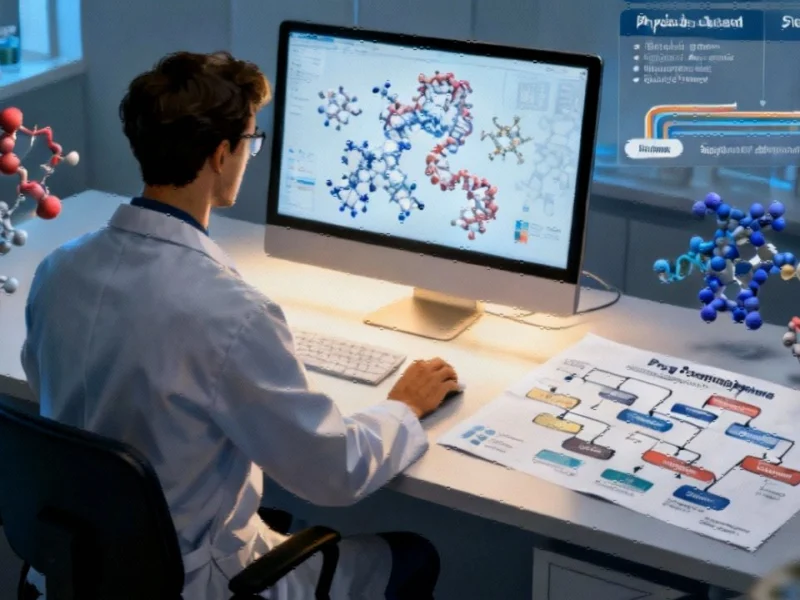Breaking the Generalization Barrier in AI Drug Discovery
Researchers are reporting a potential breakthrough in applying machine learning to the earliest stages of drug discovery, addressing a critical limitation that has hampered real-world implementation. According to sources familiar with the research, a new framework specifically targets the “generalizability gap” that causes AI models to fail unpredictably when encountering unfamiliar chemical structures.
The Costly Drug Development Challenge
The drug development pipeline remains notoriously expensive and time-consuming, with identifying high-quality “hit” compounds at the initial screening stage representing a major bottleneck. Analysts suggest that improving this early phase could significantly reduce costs and accelerate the path to clinical trials. For over a decade, researchers have looked to computational methods to streamline this process, but accurate and rapid estimation of molecular interaction strength has remained elusive.
“Machine learning promised to bridge the gap between the accuracy of gold-standard, physics-based computational methods and the speed of simpler empirical scoring functions,” said Dr. Benjamin P. Brown, an assistant professor of pharmacology at Vanderbilt University, according to the published research. “Unfortunately, its potential has so far been unrealized because current ML methods can unpredictably fail when they encounter chemical structures that they were not exposed to during their training.”
A Targeted Approach to Molecular Interactions
The report states that Brown’s approach, detailed in Proceedings of the National Academy of Sciences, takes a fundamentally different tack from previous methods. Rather than learning from entire 3D structures of proteins and drug molecules, the proposed framework focuses exclusively on the interaction space between them. This constrained view forces the model to learn transferable principles of molecular binding rather than relying on structural shortcuts that fail to generalize.
Sources indicate that this methodology captures distance-dependent physicochemical interactions between atom pairs, essentially teaching the AI the fundamental rules of molecular recognition rather than memorizing specific examples. This approach appears particularly relevant given binding selectivity challenges in drug development.
Rigorous Testing Protocol Simulates Real-World Scenarios
A key aspect of the research, according to analysts, was the development of a rigorous evaluation protocol designed to simulate practical application. The testing framework deliberately excluded entire protein superfamilies and their associated chemical data from training sets, creating what sources describe as a challenging and realistic test of the model’s ability to generalize to truly novel targets.
“We set up our training and testing runs to simulate a real-world scenario: If a novel protein family were discovered tomorrow, would our model be able to make effective predictions for it?” Brown explained in the paper. This testing approach comes amid broader industry developments in AI optimization.
Broader Implications for Computational Biology
While the current research focuses specifically on scoring compounds based on their interaction strength with target proteins, the principles established could have wider applications. The report suggests this work provides several key insights for the field of computational drug design, particularly regarding scalability and generalizability challenges.
According to the publication available at the journal link, Brown’s laboratory continues to investigate modeling challenges in molecular simulation and computer-aided drug design. This research direction aligns with other related innovations in academic AI applications.
The Path Forward for AI in Drug Discovery
Although significant challenges remain in fully realizing the potential of AI for drug discovery, analysts suggest this work clarifies a viable path forward. The approach represents a shift from attempting to build universally capable models to creating specialized systems with built-in constraints that promote generalization.
The research emerges during a period of rapid advancement in computational methods, alongside other recent technology developments in materials science. However, as with many AI applications, the field faces market trends regarding sustainable implementation.
While this research shows promise for the drug discovery pipeline, the framework requires further validation across diverse protein families and compound libraries before widespread adoption, according to industry experts.
This article aggregates information from publicly available sources. All trademarks and copyrights belong to their respective owners.



